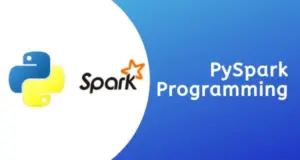PyTorch has developed over the past few years into a well-liked and often used framework for deep neural networks (DNN) training. about Pytorch 2.0 PyTorch’s popularity is credited to its ease of use, first-rate Python integration, and imperative programming approach. PyTorch has aimed for excellent performance and enthusiastic execution since its release in 2017. Some of the greatest abstractions for distributed training, data loading, and automatic differentiation have been made available by it.
A versatile and effective method of creating machine learning models is provided by the open-source, community-driven deep learning framework PyTorch. It seamlessly integrates with the Python ecosystem, has a user-friendly interface, and has a large network of supporters.
PyTorch has advanced from version 1.0 to the most recent version, 1.13, thanks to the PyTorch team’s constant innovation. However, during the course of so many years, hardware accelerators like GPUs have improved in computation and memory access performance by 15x and 2x, respectively. Thus, the team migrated a significant portion of PyTorch internals to C++ in order to take advantage of these resources and deliver high-performance eager execution.
The about Pytorch 2.0 team debuted a new version of the software on December 2, 2022, which will significantly speed up the training of deep neural networks and allow dynamic forms. PyTorch 2.0’s stable release was made available in March 2023.
The basic compiler operations have undergone significant changes in PyTorch 2.0 while yet maintaining the same degree of comfort and familiarity for developers. This most recent improvement guarantees accelerated performance and expanded support for Dynamic Shapes and Distributed.
What is New in PyTorch 2.0?
Let’s first understand the key distinction between eager and graph executions before learning what’s new in about Pytorch 2.0. Learn more about PyTorch 2.0 by getting a Python online course certification.
- Eager Execution: In an eager execution, the operations are assessed as they are being performed. The applications often have a natural Python-like syntax design and are simple to write, test, and debug. However, because of its design, it is unable to effectively utilise GPUs and other hardware accelerators’ capabilities. A popular example of eager execution is PyTorch.
- Graph Execution: On the other hand, prior to running, graph execution constructs a graph of all operations and operands. As the graph created can be tuned to take advantage of hardware accelerators, such an execution is substantially faster than an eager one. However, writing and debugging such programs is more difficult. The classic example that comes after graph execution is TensorFlow.
In addition to offering some of the greatest abstractions for distributed learning, data loading, and automatic differentiation, PyTorch has always aimed for good performance and prompt execution. The team shifted PyTorch’s internals to C++ to speed up program execution and reduce hackability without sacrificing eager mode’s flexibility.
The PyTorch 2.0 version attempts to speed up deep neural network training while using less memory and supporting dynamic forms. Additionally, PyTorch 2.0 promises improved speedups in eager mode and seeks to take advantage of hardware accelerators’ capabilities.
To make Python quicker and more hackable, PyTorch is bringing parts from C++ back into the language. ‘torch.compile’ was added in version 2.0, changing how PyTorch functions at the compiler level. Your existing code will not be affected by this optional functionality.
PyTorch 2.0 Compile
New technologies were developed to give the ‘torch.compile’ functionality a strong foundation:
- TorchDynamo: a Just-in-Time (JIT) Python compiler created specifically to speed up PyTorch. It integrates with CPython’s frame evaluation API to dynamically modify Python bytecode during runtime, facilitating quicker code execution.
- AOTAutograd: a set of tools to help PyTorch developers speed up model training. It performs both forward and reverse graph tracing. Additionally, AOTAutograd provides straightforward methods for seamlessly compiling the extracted graphs using state-of-the-art deep-learning compilers.
- PrimTorch: PrimTorch has greatly streamlined the process of creating PyTorch features or backends by drastically decreasing the amount of PyTorch operators from over 2000 to a condensed collection of roughly 250 primitive operators.
- TorchInductor: a deep learning compiler that is native to PyTorch that automatically converts PyTorch models into code suitable for various accelerators and backends. OpenAI Triton serves as the foundation for GPU acceleration in TorchInductor.
All of the new technologies allow dynamic shapes and are written in Python. It lowers the entrance barrier and makes new PyTorch run code faster, more adaptable, and more hackable.
Benchmark
In order to provide performance benchmarks for a new compile feature in PyTorch 2.0, developers employed 163 open-source models (46 HuggingFace Transformers, 61 TIMM, and 56 TorchBench). The Benchmark was meticulous in its inclusion of tasks like image classification, image generation, language modelling, recommender systems, and reinforcement learning.
The outcome reveals noticeably better performance when using NVIDIA A100 GPUs for training.
Note that only CPUs and the Nvidia Volta and Ampere GPU series are supported by the default backend at this time.
Conclusion To know more about PyTorch 2.0, check out the Python training course.




























